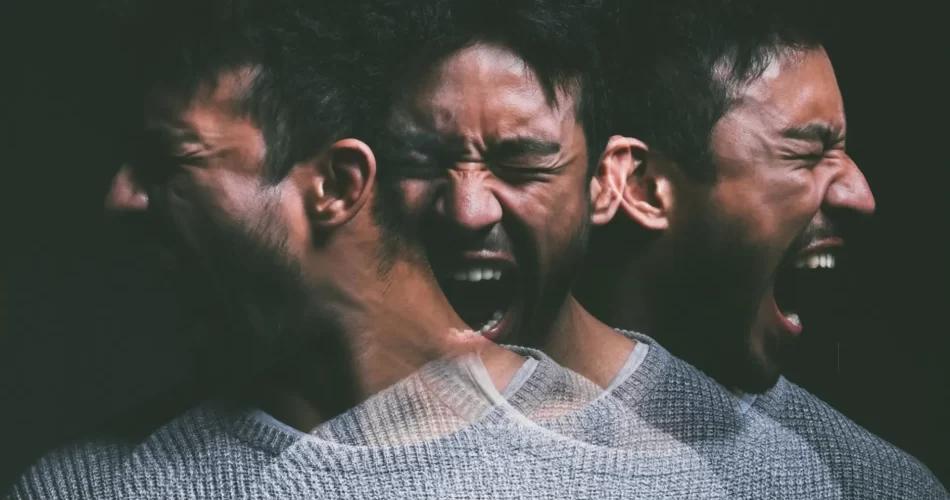Last Updated on 27 November 2023 by Vanessa Thoko
The exact cause of social anxiety disorder (SAD) is unknown, but it is thought to be caused by a combination of genetic and environmental factors:
- Negative childhood experiences
- Overly critical or controlling parenting
- Trauma
- Medical conditions
- Substance abuse
SAD tends to run in families, suggesting that there is a genetic component to the disorder.
In this post, we’ll dive into what causes SAD and how it impacts the lives of individuals in our community.
Key Facts
- Social Anxiety Disorder (SAD) results from a mix of genetic and environmental factors, including negative childhood experiences, parenting styles, trauma, medical conditions, and substance abuse.
- Genetics play a role, with several genes associated with SAD, but further research is needed to understand their full impact.
- Brain chemistry imbalances, like serotonin and norepinephrine, may also contribute to SAD, impacting mood and anxiety regulation.
- SAD is distinct from shyness, causing severe anxiety and distress even in familiar social situations, affecting work, school, and relationships.
- Seek professional help if you suspect SAD, as effective treatments like therapy and medication are available.
- SAD has wide-ranging impacts, hindering career growth, academic performance, and social relationships, and even affecting physical health.
- Multiple options for help and support are available, including diagnosis by a doctor or mental health professional, therapy, support groups, and medication.
- Acknowledging SAD, raising awareness, and offering support can create a more compassionate community, providing hope for a brighter, anxiety-free future.
Causes
Genetic Factors
SAD tends to run in families, suggesting that there is a genetic component to the disorder.
Researchers have identified a number of genes that may be associated with SAD, but more research is needed to understand how these genes contribute to the disorder.
Environmental factors

A number of environmental factors may also play a role in the development of SAD, including:
- Negative childhood experiences: Children who experience teasing, bullying, rejection, or other negative social experiences are more likely to develop SAD.
- Overly critical or controlling parenting: Children who are raised by overcritical or controlling parents may be more likely to develop SAD.
- Trauma: People who have experienced trauma, such as physical or sexual abuse, are at increased risk for developing SAD.
- Medical conditions: Some medical conditions, such as thyroid problems and heart disease, can cause physical symptoms that are similar to those of anxiety, which can lead to SAD.
- Substance abuse: Alcohol and drug abuse can worsen SAD symptoms.
Brain chemistry

Researchers believe that SAD may also be caused by imbalances in certain brain chemicals, such as serotonin and norepinephrine.
These chemicals play a role in regulating mood and anxiety.
It is important to note that SAD is not simply shyness.
People with SAD experience a significant amount of anxiety and distress in social situations, even when they are around people they know and trust.
SAD can interfere with work, school, and relationships.
If you think you may have SAD, it is important to talk to a doctor or mental health professional.
There are effective treatments available, such as therapy and medication.
The Impact
Social anxiety disorder (SAD) can have a significant impact on all aspects of a person’s life, including work, school, relationships, and physical health.
Impact on work
People with SAD may have difficulty finding and keeping a job.
They may be afraid to speak up in meetings, to give presentations, or to network with colleagues.
This can make it difficult to advance in their careers.
Impact on school
Students with SAD may have difficulty participating in class, raising their hands, or giving presentations.
They may also avoid extracurricular activities and social events. This can lead to poor academic performance and low self-esteem.
Impact on relationships
People with SAD may have difficulty making and keeping friends.
They may be afraid to go to social events or to meet new people.
They may also avoid dating or romantic relationships. This can lead to isolation and loneliness.
Impact on physical health
SAD can also have a negative impact on physical health.
People with SAD may experience physical symptoms of anxiety, such as a racing heart, sweating, and dizziness.
They may also have difficulty sleeping and may be more likely to abuse alcohol or drugs.
Overall, SAD can have a significant impact on a person’s quality of life. If you have SAD, it is important to seek professional help.
There are effective treatments available, such as therapy and medication.
Seeking Help And Support

There are a number of ways to seek help and support for social anxiety disorder (SAD).
- Talk to your doctor or mental health professional: They can assess your symptoms and diagnose SAD. They can also develop a treatment plan that is right for you.
- Seek therapy: Therapy is a very effective treatment for SAD. There are a number of different types of therapy that can be helpful, including cognitive-behavioral therapy (CBT) and exposure therapy.
- Join a support group: Support groups can provide you with a safe and supportive space to connect with other people who have SAD. You can learn from each other’s experiences and offer support to each other.
- Take medication: Medication can be helpful in reducing the symptoms of SAD. However, it is important to note that medication should not be used as a substitute for therapy.
Conclusion
SAD is a real and challenging condition that affects many in South Africa.
The first step is acknowledging it, and the second is reaching out for support.
By raising awareness and offering help, we can create a more compassionate and understanding community that supports those facing social anxiety disorder.
Remember, you’re not alone in this journey, and there’s hope for a brighter, anxiety-free future.










